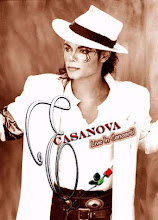Beginnings
Main article: History of Sesame Street
Up until the late 1960s, the use of television as an educational tool in the US was "unproven" and "a revolutionary concept".[2] In 1966, the Carnegie Institute hired Joan Ganz Cooney to study how the media could be used to help young children, especially those from low-income families, learn and prepare for school.[3][4] Cooney proposed using television's "most engaging traits",[5] including high production values, sophisticated writing, and quality film and animation, to reach the largest audience possible.[5] Cooney suggested creating a program that would spread prolearning values to both viewers and nonviewers (including their parents) that would affect them for many years after they stopped watching it.[6]
Sesame Street custom Children's Television Workshop logo used in seasons 1-13.
As a result of Cooney's initial proposal, the Carnegie Institute awarded her an $8 million grant to establish, in collaboration with Carnegie Institute vice-president Lloyd Morrisett, the Children’s Television Workshop (CTW) and create a new children's television program.[4][7] In 1968, millions more were invested by the Ford Foundation, the Corporation for Public Broadcasting, and the US federal government. Cooney began to assemble a team of producers: Jon Stone, Dave Connell and Sam Gibbon.[4] That summer, five three-day curriculum planning seminars, led by Harvard University professor Gerald S. Lesser, were conducted in Boston.[4][8] The seminars marked the beginning of Jim Henson's involvement in Sesame Street,[4] and provided the show's producers and writers with a "crash course in child development, psychology, and preschool education".[9] The new show, called the "Preschool Educational Television Show" in promotional materials, was built around an inner-city street, a choice that was "unprecedented".[10] The producers and writers could not come up with a name they liked "up until the last moment".[11] They finally settled upon the name they least disliked: Sesame Street, although they initially feared that it would be too difficult for young children to pronounce.[11]
Two days before the premiere of Sesame Street, a thirty-minute preview entitled This Way to Sesame Street was shown on NBC. The show was financed by a $50,000 grant from Xerox. Written by Stone and produced by CTW publicist Bob Hatch, it was taped the day before it aired.[12] Newsday called the preview "a unique display of cooperation between commercial and noncommercial broadcasters".[12] Sesame Street premiered on PBS on November 10, 1969.[13] The new show was praised from the start. As writer Michael Davis states, "...It became the rare children's show stamped with parental approval".[14] The show reached only 67.6% of the nation, but earned a 3.3 Nielsen rating, or 1.9
Saturday, May 2, 2009
Subscribe to:
Post Comments (Atom)

No comments:
Post a Comment